
Zachary Oxman's new sculpture of Duke Ellington stands in front of the recently restored Howard Theatre.Carlyle V. Smith/CapitalBop
Editorial board
The minds that study our past most closely are often the ones with the greatest vision for the future. It’s why we need historians, and why the best innovators have their own mentors. It’s really our reason for reading stories at all. To step surely, we need traction, which means digging into the ground on which we walk.
When the Howard Theatre began its reopening process last week, the local press recognized the boldness and precariousness of the venture. But the past few days’ events confirm that the Howard’s new team prizes its history. Before any VIP banquets or sold-out concerts, the theater opened its doors for a community day, embracing the Shaw community that was always its base.
And as you walk through the majestic theater, you find photographs of the great Black entertainers who took the stage there over the years, from Dizzy Gillespie to Aretha Franklin. Then you glance up at the huge screens flanking the stage, and you notice the announcements for upcoming acts – Robert Glasper, Erykah Badu, Yasiin Bey (formerly Mos Def). It’s an encouraging lineup, because it acknowledges that constant progression, not some destined greatness, made those performers in the black-and-white photos into heroes. The Howard is out to reestablish itself as the city’s central proving ground for Black American Music’s new national stars.
So it’s fitting that a sculpture of Duke Ellington – that great D.C. native, innovator and Black cultural advocate – was unveiled last month outside the theater. The artwork is a swirling mass of metal, Ellington’s keyboard zooming into the sky in a whirl of visual sound. It implies the fluidity and endlessness of musical progress. I spoke to Zachary Oxman, the artist who created the statue, about what motivated him to portray Ellington and what he sought to convey.
CapitalBop: How were you selected to do this work?
Zachary Oxman: It was a call to artists – that’s how the [D.C.] Commission on the Arts and Humanities operates, they put out calls for certain projects. This was actually the first one I’d ever responded to. It just seemed so perfect. I was selected based on my prior works to be on a shortlist of five, and those finalists had to come up with what ultimately would be the final design. And it was my design that was chosen.
“It [is] important to honor the past, celebrate the present and embrace the future…. Things don’t have to be wiped clean and started fresh, there’s so much there that just needs to be brought back out again.”
CB: What struck you when you read about this particular project? Why were you motivated to apply?
ZO: Well, I was motivated on several levels. Certainly, there’s the local connection; what an opportunity to create this for my hometown. But even more so, a theme that has always been a part of my work has been a lyrical sensibility, and music – not always in a literal sense, but certainly in an emotional sense. It wasn’t specifically [in the commission] that it needed to be Duke Ellington. It was really to create a work of public art that would tell the story of the vibrancy of this community, the history of this community, where this community is going to go. So it really needed to carry a broad story. Quickly, as I was analyzing how I would approach it, it just seemed too appropriate to use Duke Ellington and the iconography that he represents.
CB: There is a lyricism and dynamism to what you’ve created. You see him surrounded by this swirl of keys, as if the keyboard is almost an embodiment of the music as it passes us by in time. What was it about his music, or whatever you wanted to represent, that motivated you to use that iconography of movement?
ZO: What’s interesting is, there’s such a range to his career.… That is the challenge of the artist: The reality is that you are capturing a moment. There is sculpture that is kinetic and might even have sound to it, but this particular sculpture is not kinetic, and there’s no sound. But those elements are so important, and so for me as an artist it comes down to: How do you take static imagery and actually make it viscerally create sound and movement? It shows a motion. For instance, the piano: That piano slowly transforms into the music by changing. The keys separate into a staff, but then there’s notes, but then the notes themselves dissipate up so that it shows this ongoing, perpetual sound…. [It represents] the perpetual motion that music is – that it is ongoing.
There are different levels of experience: You experience it visually, you experience it auditorily, and it gives you inspiration. This isn’t only reflecting and celebrating the past, but it’s also sort of setting the way for the future.
CB: I assume you listened to a lot of Duke while you were working on it. What is your favorite Ellington piece?
ZO: Well, it’s interesting, because it’s “Mood Indigo,” but I probably connect with it in a different way than most people do. Because the reality is, on a day-to-day basis, my work is very aggressive and loud, and it might seem to be at a different tempo than that song. But I actually like playing with duality…. [“Mood Indigo”] brought out a range in me. It’s always moving at a certain tempo; it was a balance. It really resonated with me.
CB: Over the past week, the events and concerts that have been kicking off the Howard’s rebirth have really made it clear that the people behind the theater are concerned with honoring what it represented in the past, and bringing it forward as a progressive, community-oriented institution.
ZO: Because of my age, I can’t speak about a first-person experience at the Howard of the past. However, one of the things that I set about doing in my sculpture that I think they did such an outstanding job with is, it was important to honor the past, celebrate the present and embrace the future. The Howard really is public art, in the sense that it’s not just about making a part of the city pretty or commercially viable, but it’s doing it in a way that allows the history and the patina that is so important and great to really resonate through this experience. I felt it there [at the concert on April 10]; I felt the pride in the older generation, and it was so contagious you could feel it in generations that never experienced the old Howard. There is such significance that they kept so much of the history in so many ways. I think it gives you faith in the rest of the parts – that things don’t have to be wiped clean and started fresh, there’s so much there that just needs to be brought back out again.![]()




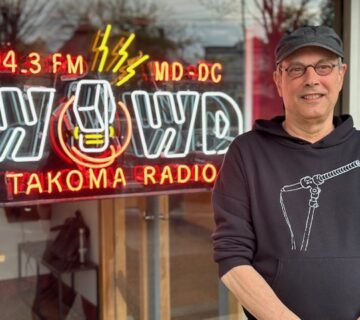
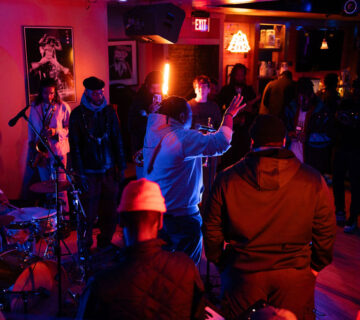
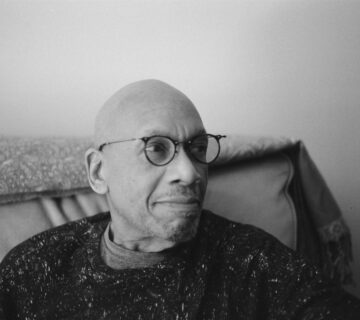
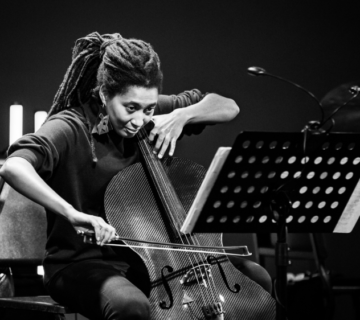
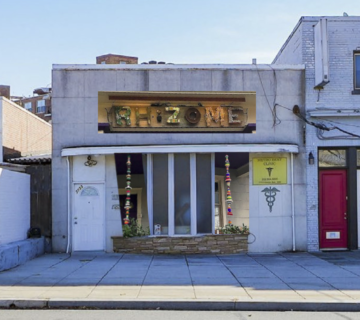
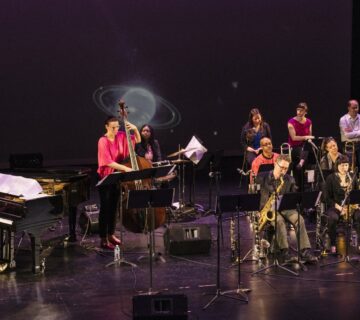
Join the Conversation →